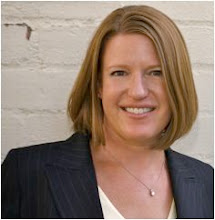Brand Endeavor’s own Christie Harper was recently invited to contribute to an interesting new book called The Book on Business from A to Z: The 260 Most Important Answers You Need to Know. The book contains 26 chapters penned by business specialists who provide brief, focused answers to the 10 most frequently asked or hotly debated questions in their field. Chapters range from E: Equity to J:Juris Prudence or Y: Yield. And yes -- B: Branding.
The instigation for this book was the dilemma consultants often find themselves in when clients ask questions that are slightly (or very) beyond our range of expertise. The co-authors all do our best to find the right answers for the client -- and this book can be par of the solution. In this newsletter issue, we're featuring an excerpt from the Branding chapter -- one of the questions that’s already garmered a lot of interest from early readers:
How does branding increase a company’s sales?
Branding works in three direct ways to increase sales: attracting new customers, retaining existing customers and enabling you to command a price premium. By making a compelling and relevant promise, you attract new customers with that promise, you retain customers by providing the experience you have led them to expect, and you can command a price premium over others who are not making or keeping relevant promises.
This dynamic is easiest to spot in consumer branding, when you consider a pair of brands in the same category. Consider Target and K-mart. Both are discount retailers, providing clothing and household goods at low prices; both have high levels of awareness; both have partnerships with celebrity brands. But K-mart’s brand promise really stops at the commodity “low prices” promise, while Target’s promise encourages consumers to aspire to something more: not just low prices, but great design at low prices. Target’s promise is “Great design doesn’t have to be expensive.” Target’s revenue in 2010 was $66 Billion. The entire Sears entity, which owns K-mart among other retailers, was $44 Billion. Target was also significantly more profitable than Sears.
You can see the same dynamic in B2B marketing. IBM was ranked #2 on Interbrand’s 2010 List of Best Global Brands. Just behind Coke. Astonishing for a “boring” B2B brand. IBM’s promise is about smart people doing smart and complex things. Compare this to its closest competitor, HP, which, while still a very powerful brand (#10 on Interbrand’s list) is struggling to rationalize its broad portfolio of products and services. Its new brand promise is “Let’s do amazing,” which is emotional, but not particularly differentiating or relevant.
IBM reported a profit margin of 15% in 2010, while HP’s was less than half that. On every financial level, IBM is besting HP by more than 50%.

